In 2022, AMD completed Class B qualification for the company’s first space-grade Versal™ adaptive SoCs. The XQR Versal™ AI Core XQRVC1902 devices deliver full radiation tolerance, accelerated AI inferencing and high-bandwidth signal processing performance for satellite and space applications. The completion of Class B qualification, derived from the US military specification MIL-PRF-38535. The devices to began shipping in early 2023. SpaceX has put them into Starlink V2 mini satellites already.
The radiation-tolerant XQR Versal AI Core XQRVC1902 devices represent a major leap forward in enabling sophisticated on-board data processing and AI inferencing applications in …
In 2022, AMD completed Class B qualification for the company’s first space-grade Versal™ adaptive SoCs. The XQR Versal™ AI Core XQRVC1902 devices deliver full radiation tolerance, accelerated AI inferencing and high-bandwidth signal processing performance for satellite and space applications. The completion of Class B qualification, derived from the US military specification MIL-PRF-38535. The devices to began shipping in early 2023. SpaceX has put them into Starlink V2 mini satellites already.
The radiation-tolerant XQR Versal AI Core XQRVC1902 devices represent a major leap forward in enabling sophisticated on-board data processing and AI inferencing applications in space. Until now, highly complex AI applications could only be performed with custom-designed ASICs, which are prohibitively expensive for most space programs.
Performance metrics (133 TOPS INT8, 1,968 DSP engines) are unchanged, as the hardening is by design without sacrificing compute density.
Unlike the XQRVC1902’s RHBD techniques, the 4 nanometer Nviida H100 launched by Starcloud is not not a rad-hard process. Starcloud is likely using external shielding, error isolation, or software redundancy to handle cosmic rays, but this is unconfirmed and less robust than AMD’s integrated design. Radiation risks are mitigated at the satellite level.
Radiation Hardening Techniques
Radiation hardening in the XQRVC1902 uses a radiation-hardened-by-design (RHBD) approach, incorporating over 50 patents for SEU mitigation directly into the silicon.
Key techniques include:
Triple Modular Redundancy (TMR) – Hardwired TMR in the Platform Management Controller (PMC) using MicroBlaze processors, providing fault-tolerant voting to detect/correct errors in real-time.
XilSEM (Xilinx SEM): An advanced configuration memory scrubber with interleaving and error detection/correction (EDAC), achieving 100% correctable SEUs in CRAM without uncorrectable events. This eliminates the need for external scrubbers, reducing system complexity.
Error-Correcting Code (ECC/EDAC): Applied across all on-chip memories and caches to handle single-bit flips from cosmic rays.
Fault-Aware Training (FAT): In AI Engines, this reduces datapath SEU errors by ~4x through adaptive model retraining.
Testing Results: Proton and heavy-ion beam tests showed no single-event latchup (SEL) or functional interrupts (SEFI) under extreme conditions (LET over 80 MeV·cm²/mg).
Total Ionizing Dose (TID) tolerance exceeds 120 krad(Si), suitable for LEO/GEO.
These features ensure the device operates flawlessly in radiation fluxes 1,000x higher than Earth, with SEU rates low enough for uncrewed missions.
Other Space-Grade Modifications
Beyond radiation, modifications focus on environmental resilience and integration:
Lidless packaging with a stiffener ring for better heat spreading in vacuum; withstands launch vibrations and thermal cycling (-55°C to +125°C).
Security and Safety: Integrated boot, monitoring, and high-speed debug features hardened against faults; supports on-orbit partial reconfiguration for adaptive missions.
SWaP Optimization: Maintains commercial pinout/footprint for drop-in replacement, but with space-specific solder (Sn-Pb) to prevent tin whisker growth.
The 7 nanometer chips are qualified for 7 years standard, with evaluations for 15 years via package upgrades.

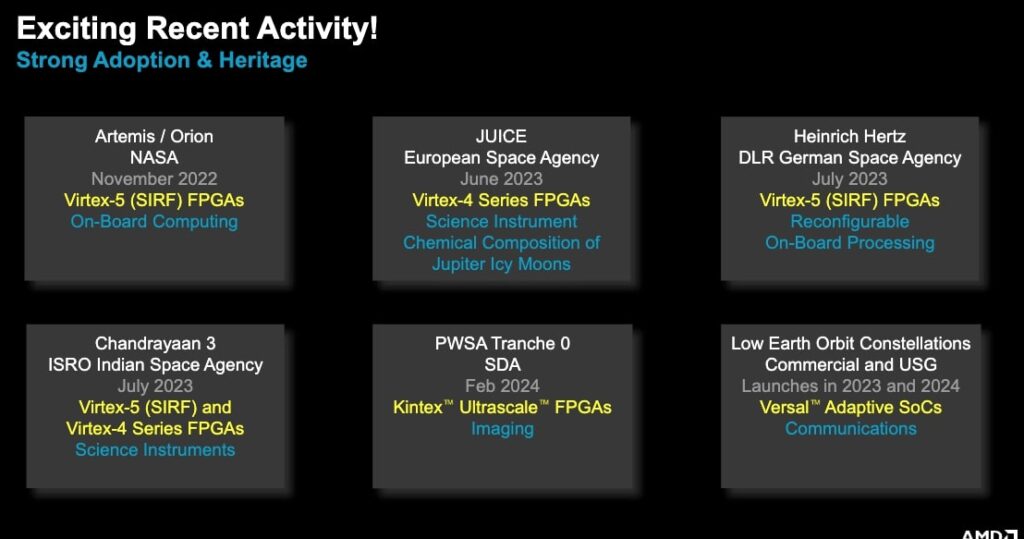
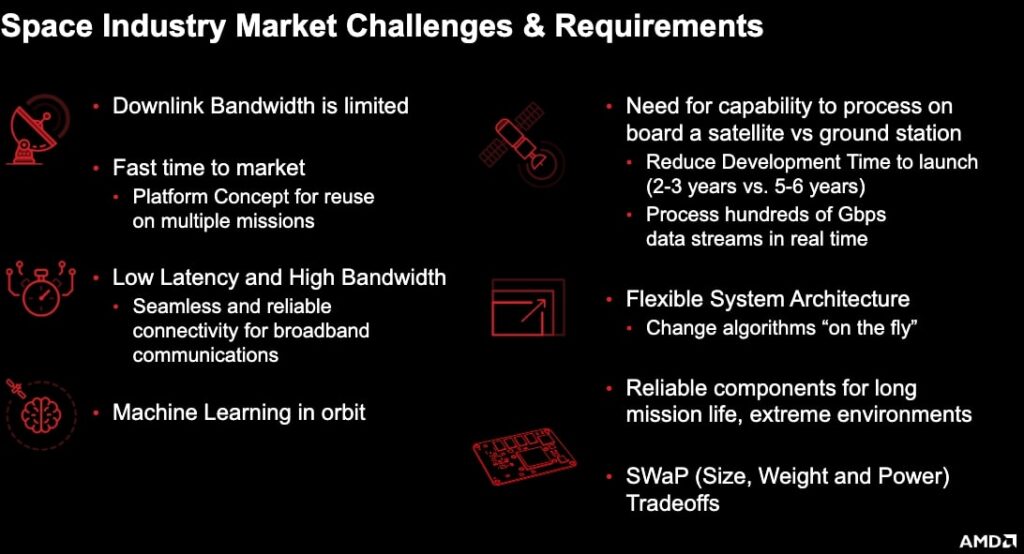
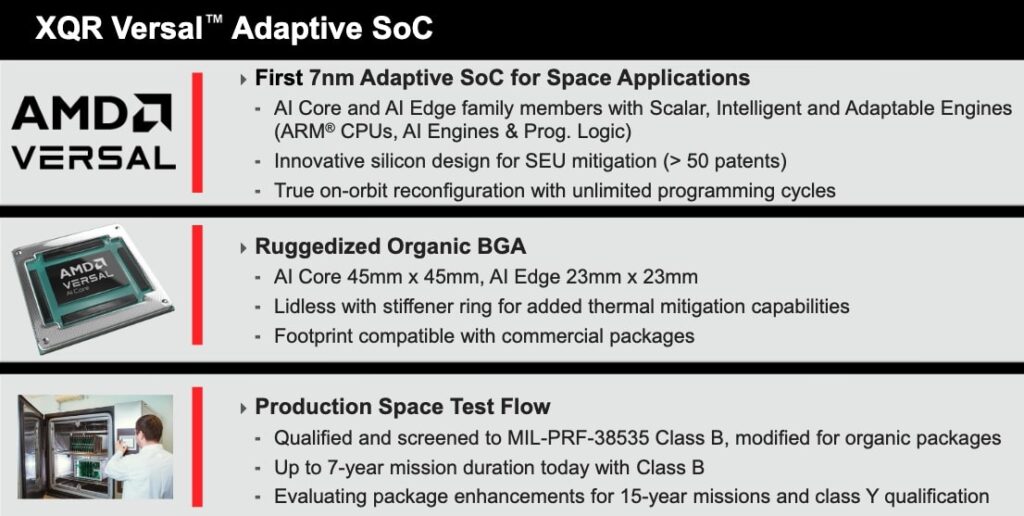

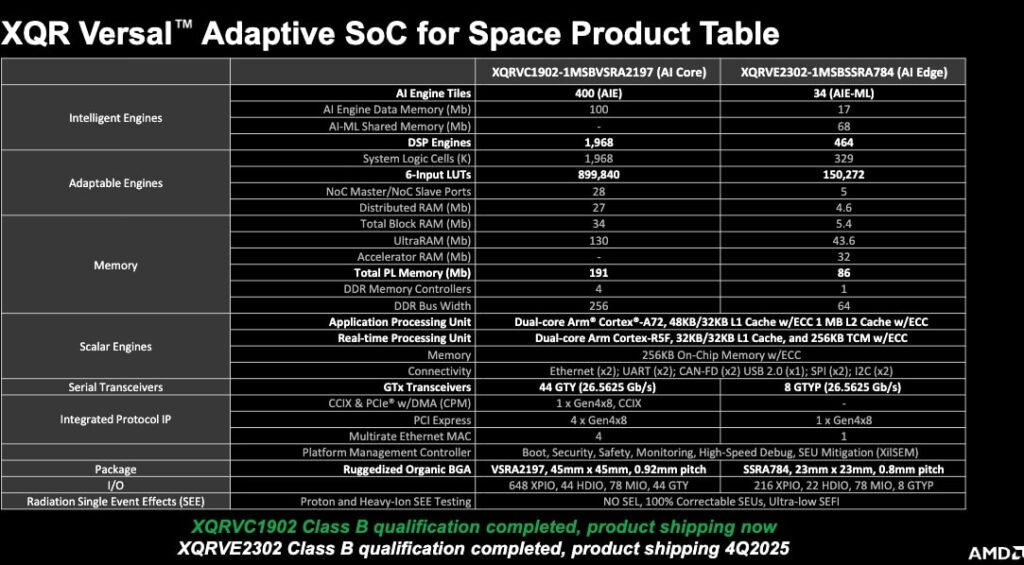
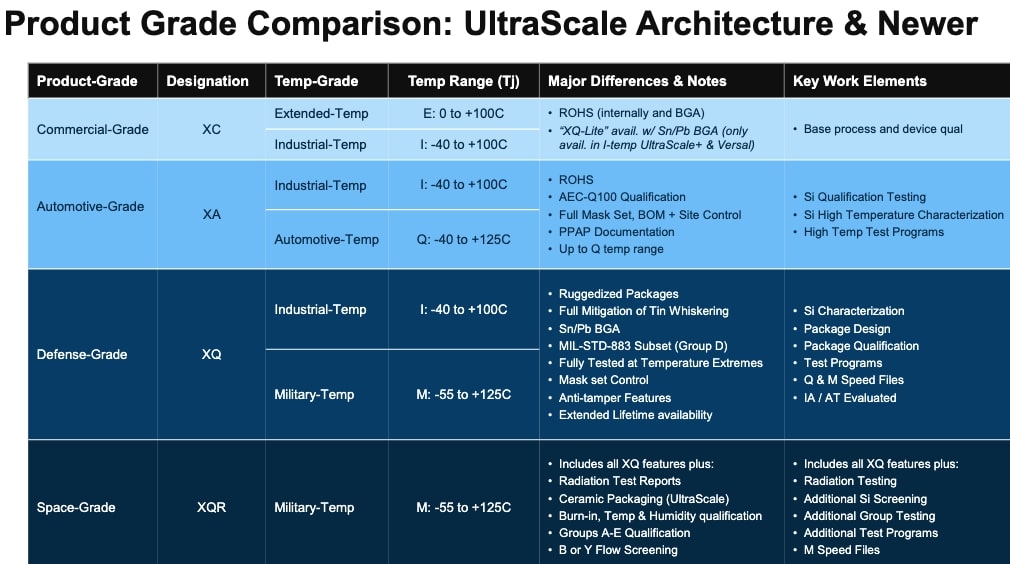
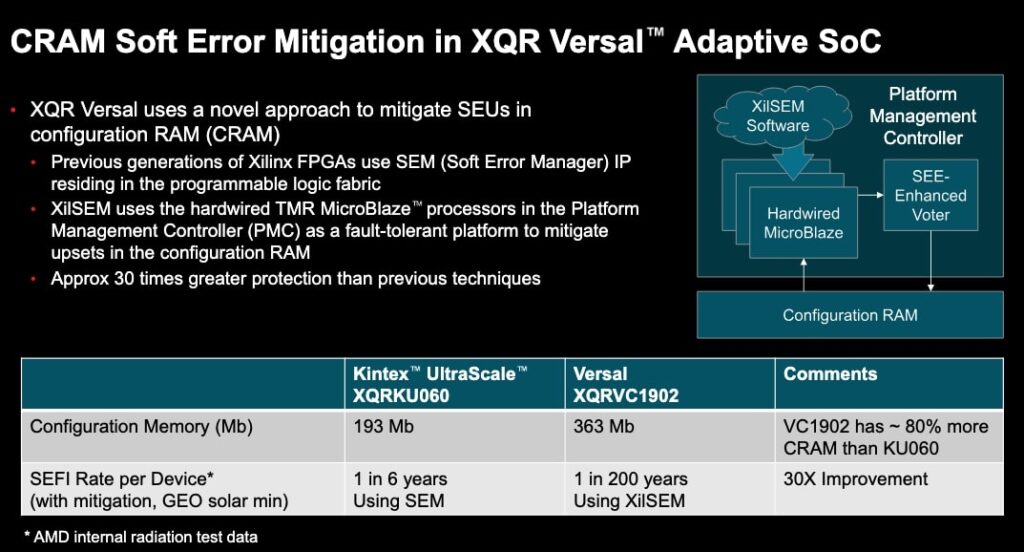


7nm Versal Adaptive SoC architecture The XQR Versal AI Core adaptive SoCs offer advanced signal processing and AI inferencing capability in a heterogeneous computing platform. The devices feature dual-core Arm® Cortex-A72 and dual-core Arm Cortex-R5 embedded processors, 400 AI/ML compute engines, almost 900,000 logic cells, and 191M bits of memory, all connected with a network-on-chip and fabricated on a 7nm CMOS process.
They are used for beamforming for more communication efficiency.
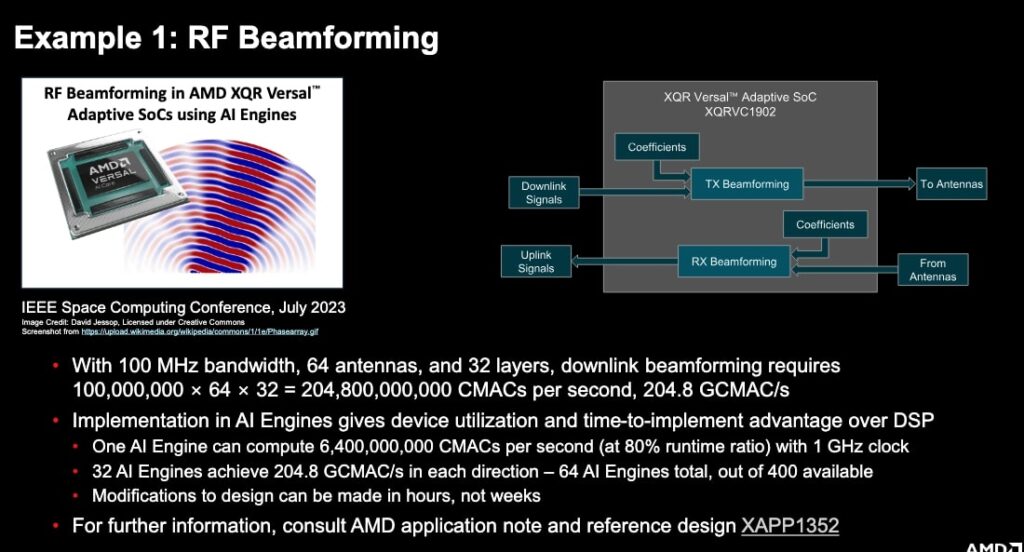

Brian Wang is a Futurist Thought Leader and a popular Science blogger with 1 million readers per month. His blog Nextbigfuture.com is ranked #1 Science News Blog. It covers many disruptive technology and trends including Space, Robotics, Artificial Intelligence, Medicine, Anti-aging Biotechnology, and Nanotechnology.
Known for identifying cutting edge technologies, he is currently a Co-Founder of a startup and fundraiser for high potential early-stage companies. He is the Head of Research for Allocations for deep technology investments and an Angel Investor at Space Angels.
A frequent speaker at corporations, he has been a TEDx speaker, a Singularity University speaker and guest at numerous interviews for radio and podcasts. He is open to public speaking and advising engagements.